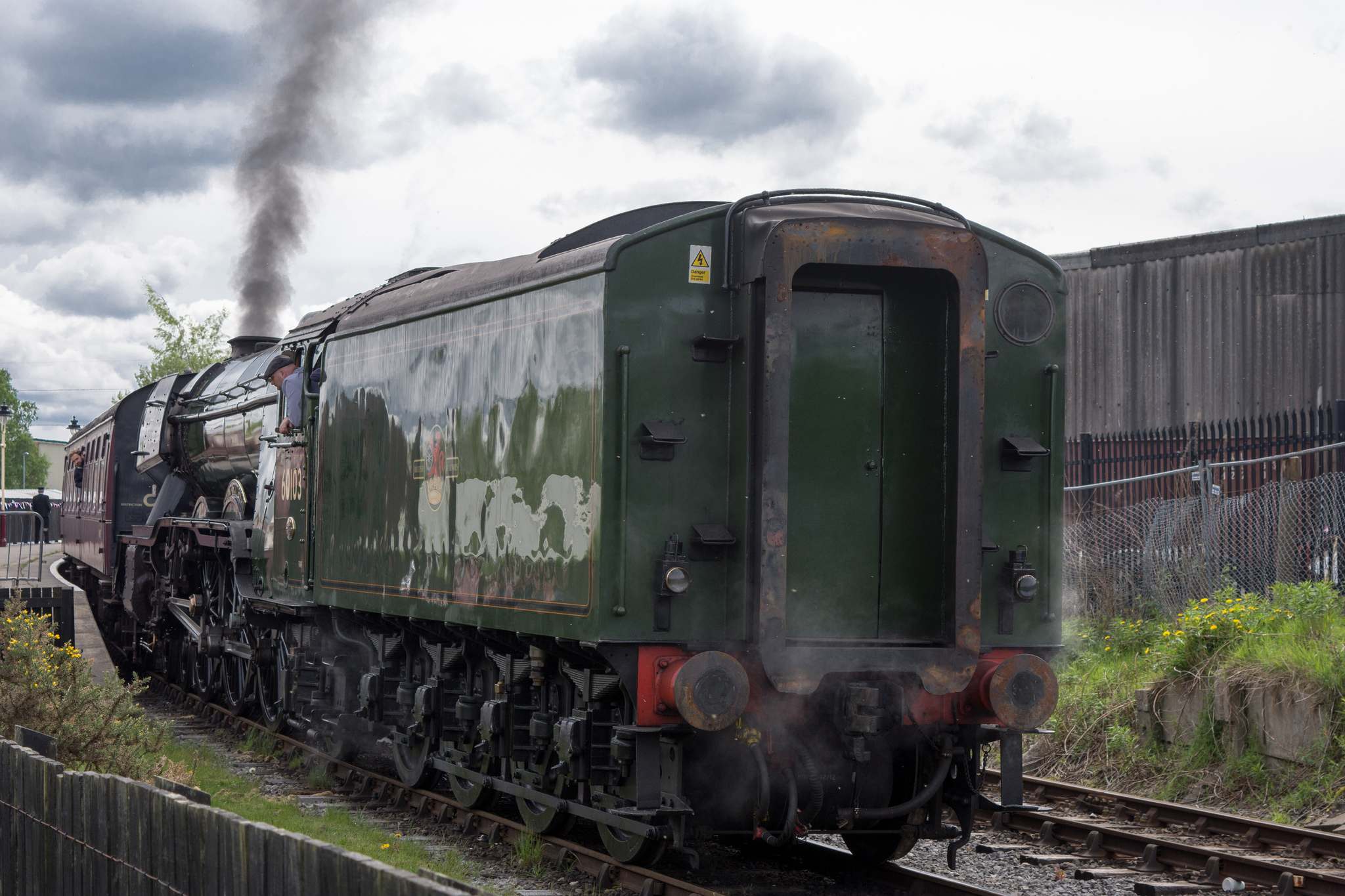The Flying Scotsman was built in 1923 for the London and North Eastern Railway, and earned its name from the London to Edinburgh rail service of the day. It was designed by Sir Nigel Gresley, with the British Empire Exhibition of 1924 making it world famous. It is 70 feet long, and weighs 96 tonnes. It was the first train to officially hit 100mph in service, in 1934. HOWEVER, the City of Truro steam engine was claimed to have beat that speed earlier, hitting 102mph in 1904. It also set a record for the longest non-stop run by a steam locomotive when it ran 422 miles (679 km) on August 8, 1989 while in Australia. The Flying Scotsman retired from regular service in 1963 after covering 2,076,000 miles (3,341,000 km) but has since gained considerable fame in preservation.










credit: cralst
These are photographs of bees collected in National Parks from a variety of separate projects.

Hoplitis fulgida, Grand Tetons National Park

Perdita latior, Arizona Petrified Forest National Park

Leptochilus acolhuus, Key Biscayne National Park, Florida

Sceliphron caementarium, Biscayne, Florida

Augochlorella aurata, Camden County, Georgia

Osmia chalybea, Georgia, Camden County

Agapostemon angelicus, Pennington County, South Dakota, Badlands National Park

Fly, Fossil Butte National Monument, Wyoming

Megachile pseudobrevis, Fort Matanzas National Monument, Florida

Andrena illinoensis, South Dakota, Badlands National Park

Andrena astragali, female, Badlands National Park, SD

Anthophora affabilis, Badlands National Park, South Dakota

Dufourea marginata, Isle Royale, Michigan

Lasioglossum pictum, Sleeping Bear Dunes National Lakeshore, Michigan

Andrena accepta, South Dakota, Badlands National Park

Anthidium maculifrons, Key Biscayne National Park, Florida

Epeolus zonatus, Cumberland Island National Seashore, Georgia

Agapostemon virescens, Kings County, New York

Melecta species, Fossil Butte National Monument, Wyoming

Dianthidum curvatum, South Dakota, Badlands national Park

Dianthidium concinnum, Pennington County, South Dakota

Nomia universitatis, South Dakota, Badlands National Park
credit: USGS Bee Inventory and Monitoring Laboratory
Airbus has shown off its plans for future design. Whole project consits of nature-inspired concept cabin with intelligent wall which controls air temperature and can become transparent to give passengers spectacular panoramic views, vitalising zone that will help passengers relax, with vitamin and antioxidant-enriched air, mood lighting, aromatherapy and acupressure treatments, holographic pop-up gaming displays. Passengers will be able to play a game of virtual golf, take part in an interactive conference or shop in a virtual changing room.






Credit: © Airbus S.A.S. (2011)
Step by step instructions :
– Check the strenght and direction of wind before use. The lantern is large and may be blown into obstacles such as treess or buildings.
– Fill lantern with air by gently swinging the lantern in the air while holding the bamboo ring. Ensure the lantern is fully extended and upright.
– Ask a friend to light the cell while you hold the lantern upright from the top.
– The lantern will fill with hot air and become light. Continue to hold the lantern by the top and bamboo righ at the bottom untill it becomes seft supporing. You can now hold it by the bottom only.
– Once the lantern is lifting on its own, release and watch with friends as it floats away for miles.

























 How to Launch Sky Flying Lantern...
How to Launch Sky Flying Lantern... Airbus Future Vision of Flying i...
Airbus Future Vision of Flying i... Macro Photography – Flying...
Macro Photography – Flying... When Was Big Ben Built?
When Was Big Ben Built? Steam Powered Machines on The Ro...
Steam Powered Machines on The Ro... South American Santiago Railway ...
South American Santiago Railway ... National Railway Museum in York
National Railway Museum in York Mystical Landscapes on Board of ...
Mystical Landscapes on Board of ...






















 Sierra Nevada Mountains Photogra...
Sierra Nevada Mountains Photogra... Joshua Tree National Park Photos
Joshua Tree National Park Photos Most Famous Steam Train – ...
Most Famous Steam Train – ... The Best Wedding Photography Ide...
The Best Wedding Photography Ide... Examples Of People Silhouette Ph...
Examples Of People Silhouette Ph...






 BMW Looks to the Future – ...
BMW Looks to the Future – ... Zhangjiajie – National For...
Zhangjiajie – National For... Memorial Bike by Paul Jr. Design...
Memorial Bike by Paul Jr. Design... New Seat IBL Concept
New Seat IBL Concept ArtScience Museum in Singapore I...
ArtScience Museum in Singapore I... Acura NSX Concept 2013 Wallpaper...
Acura NSX Concept 2013 Wallpaper...














 Sea to Sky Gondola Halfway Betwe...
Sea to Sky Gondola Halfway Betwe... Funny Pumpkin Faces Creations
Funny Pumpkin Faces Creations e-Bike Specialized Turbo USA Lau...
e-Bike Specialized Turbo USA Lau... Why Does the Sky Looks Pink
Why Does the Sky Looks Pink Langkawi Sky Bridge in Malaysia
Langkawi Sky Bridge in Malaysia


